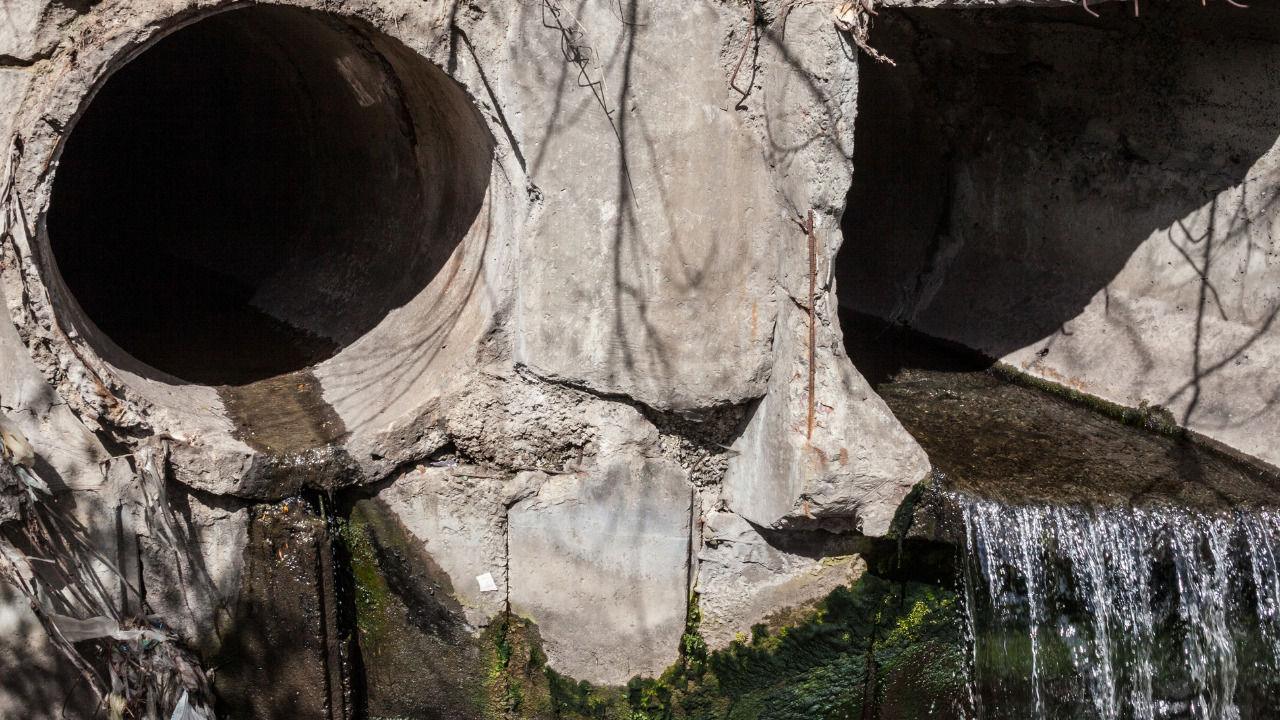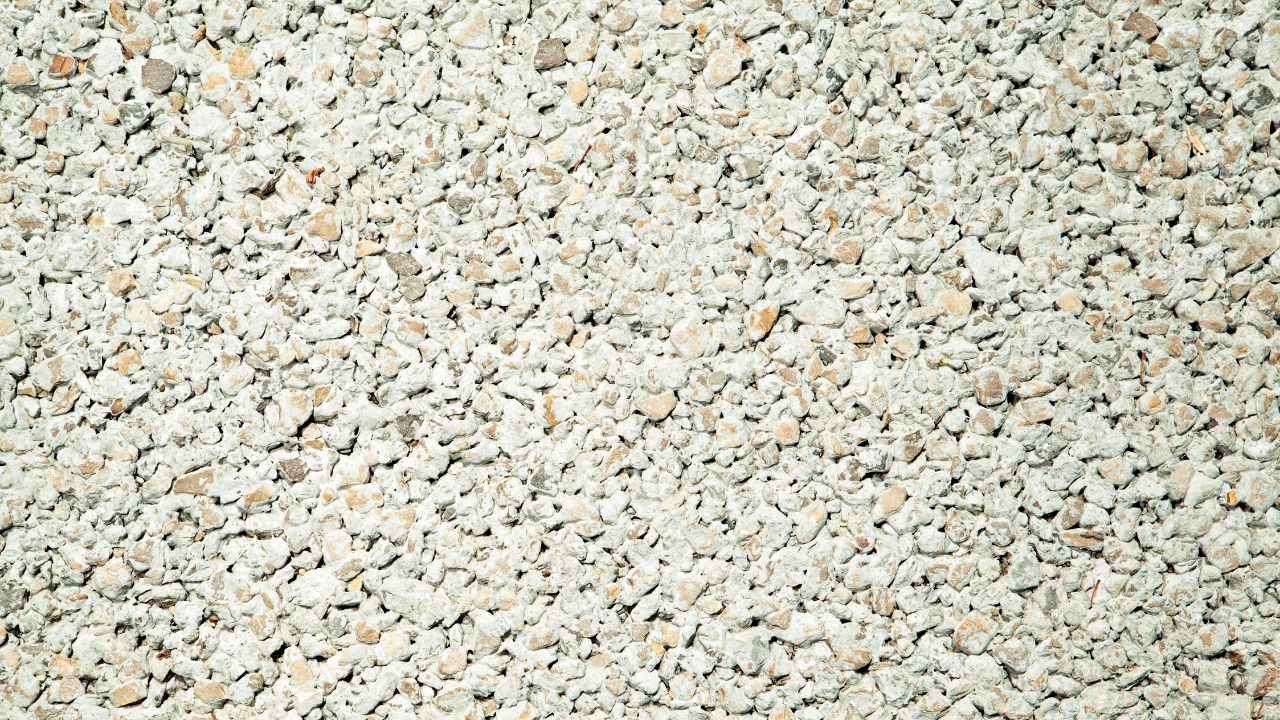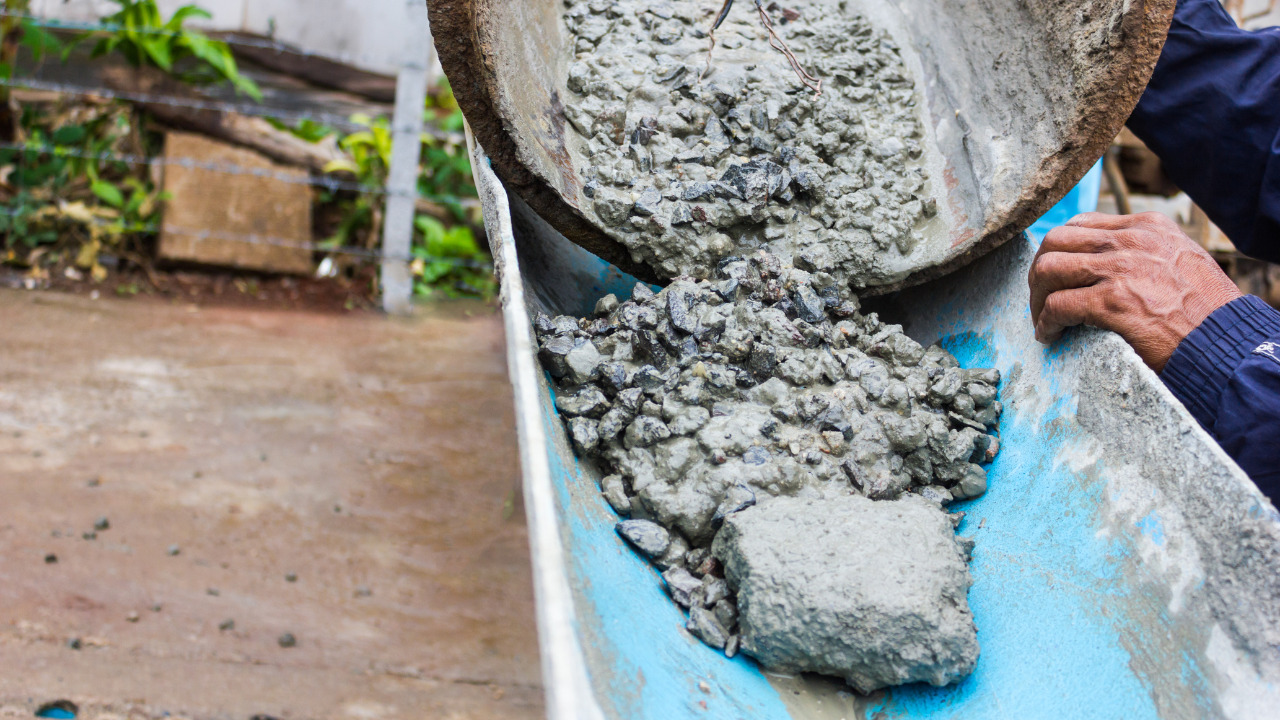In large urban centers, the impervious surface cover of pavements is the main culprit behind preventing rain or water from soaking into the surface. Be it buildings, sidewalks, driveways, streets, etc., the ponded water sometimes takes days to drain off. When this drainage issue prevails for days, it makes it arduous for locals or masses to negotiate the area feasibly.
After a rainfall event, the downpour has to go somewhere. If the ground is impervious, it cannot infiltrate into it and drain off. In such cases, the water washes off into creeks and rivers. This can indirectly be taken as increasing the amount of water in the river bodies, making them vulnerable to flooding or causing water pollution in the waterways. Another implication is that less water becomes available for recharging ground water resources.
The natural cycle goes in a way that it recharges the water resources in its own way. The plausible way of recharging ground water resources is by allowing water to infiltrate into the soil and refill the water reserve present underneath.
Management of storm water in urban areas requires some permeable material that does not hinder water from seeping into the subsoil. Therefore, the infiltration and reduction of runoff volume that comes with a rainfall event can be achieved by using permeable concrete for artificial pavements that serve the drainage cause effectively.
Table of Contents
What is Permeable Concrete?
Permeable concrete, also called pervious concrete, is a special concrete type prepared to allow water to deliberately infiltrate through it and get drained. The purpose of doing this can be twofold. Firstly, it helps reduce the runoff from a site and secondly, it can effectively serve as a method of ground water recharge.
What differentiates this concrete type from the conventional concrete is the absence of fines. Now, it is important to know that fines or fine aggregates are added in concrete to occupy the space created when irregular coarser particles come in contact. However, if fines are eliminated from the concrete mix, the aggregate-to-aggregate contact will lead to voids in the hardened concrete mass. Such a purposeful omission of fines in concrete is what creates porous or permeable concrete. This type of concrete has limited applications and is only prepared to serve special functions that we will discuss in detail as we go along.
The network of interconnected voids in the concrete accounts for such a high porosity.
Composition of Permeable Concrete and How to Make it?
Traditional concrete comprises cement, crushed stones and sand mixed with water to form a dense concrete mass. However, if you omit the fines, the resulting concrete will be porous and this is what we call permeable concrete.
Permeable concrete comprises the following main ingredients;
- A binder such as cement
- Coarse aggregates such as crushed stones
- Water with little or no fine aggregates
The high porosity of permeable concrete reduces its strength when compared to traditional concrete. However, the strength in compression can be increased by adding some quantity of fine aggregates.
Large installations of pervious concrete require proper mix design and equipment. However, if packaged products of pervious concrete are not available in your area, you can make a basic mix by following some guidelines that will help you a great deal.
The basic mix of permeable concrete can be made by taking 1 part cement powder to 3 parts crushed stones (the particle size should not be too large or too small, say 3/8 inches size of used) with just enough water for cement to hydrate properly. It is preferable to use relatively smaller sized crushed stones so that finished product provides an aesthetically pleasing surface.
It must be kept in mind that the smaller the particle size of crushed stones, the cleaner and more angular as well as uniform in size it has to be to get the desired level of concrete permeability.
The trickiest part in getting the desired mix for permeable concrete is adding the accurate quantity of water. If you add too much water, you may end with a concrete that is not permeable. On the other hand, if the water added is less, the crushed stone particles may not get aggregated well in the mix and come off once the concrete hardens.
The ideal temperature range for the preparation of permeable concrete is between 5 and 26 degrees Celsius with higher levels of humidity. A higher temperature will catalyze the evaporation of water and this is something we do not want our concrete to suffer with.
To prepare your mix, add the crushed stones and cement in a mixing tray. Dry mix the ingredients and then add water gradually. Keep a note of how much water you are adding and get the desired level of consistency. Do not take too long to wet mix the ingredients because once water comes in contact with cement, the initial setting time begins. So, if you do not want your concrete to set before it is finished off and levelled, make sure you take the necessary precautions.
While mixing, you must also ensure that no particle of crushed stones gets neglected by the cement paste. In other words, the cement paste should completely cover all particles of aggregates.
Now, the question comes that how will you know that the consistency of your concrete is just enough for permeable concrete and that no further addition of water is required? The answer to this question is that once you mix the ingredients, take a handful of concrete in your hands and a ball out of it. If the ball holds together without dismembering, you concrete is ready. On the other hand, if the ball crumbles and particles do not hold onto each other, the quantity of water has to be increased to get them gelling together. If too much water is added, you will see that the ball of concrete feels loose and slimy. To fix this, mix in more aggregates and cement.
Properties of Permeable Concrete
- A permeable concrete mix is generally prepared by restricting the water-to-cement ratio to 0.28 to 0.4 with a void content of 15 to 25 percent.
- The average flow rate of water through permeable concrete is 0.34 cm/s.
- With permeable concrete, a high compressive strength should not be expected. Strength up to 4000 psi can be achieved.
- It is durable and strong and water can flow through the network of interconnected pores in the hardened concrete mass.
Standards Used for Permeable Concrete
The American Standard for Testing and Materials (ASTM) has given a set of standards for permeable concrete that must be referred to for specific, in-depth knowledge. These codes of practice are given as follows;
- ASTM C1786 – Standard Specification for Segmental Precast Concrete Paving Slabs
This standard delineates the requirements for segmental precast concrete paving slabs made using open-graded aggregates used in permeable interlocking concrete pavements (PICP)
- ASTM C1688 – Standard Test Method for Density and Void Content of Freshly-Mixed Pervious Concrete
- ASTM C1747 – Standard Test Method for Determining Potential Resistance to Degradation of Pervious Concrete by Impact and Abrasion
- ASTM C1754 – Standard Test Method for Density and Void Content of Hardened Pervious Concrete
How to Test the Permeability of Permeable Concrete?
There are two laboratory tests that can be used to test the permeability of permeable concrete. These tests are detailed as follows;
- Constant Head Permeability Test
- Falling Head Permeability Test
Types of Permeable Paving
When in comes to permeable concrete being used as a pavement material, there are three types of the pavement structure you can construct.
-
Pavement With Total Infiltration
Pavements designed for total infiltration allow all the water to seep into the ground and recharge the water reserve present underneath. All of the infiltrated water finally reaches the water table and the level of water rises.
-
Pavement With Partial Infiltration
Pavements with partial infiltration are designed such that not all the water that seeps through the permeable pavement reaches the ground water reserves. Instead, a perforated collector pipe is installed in the pavement structure that carries a part of the drained water and the remaining water seeps into the subgrade.
-
Pavement With No Infiltration
In this type of pavement, the entire water that gets into the pavement is collected in a pipe and none of it seeps into the underlying soil for ground water recharge purposes.
Applications of Permeable Concrete
Permeable concrete is a simple and lasting solution that imitates the original hydrological characteristics of natural soil. It has some really applications given as follows;
- Permeable concrete is generally used in parking areas.
- It can also be used in areas with light traffic flows.
- It is also used in the construction of pedestrian walkways.
- Permeable concrete can also be used in greenhouse construction.
- It is also widely used for the construction of pavements preserving storm water runoff. This is a practice of Light Impact Design (LID) that provide ways to integrate storm water management as part of land development and mimic natural hydrologic processes.
- Ready-made products of pervious concrete are available in the market that simply can be installed where required and may serve to drain the water off a levelled surface.
- Permeable concrete can form a solid base for a flagstone patio or even an entire driveway.
Advantages of Using Permeable Concrete
With accumulated runoff straining the management of storm water, permeable concrete can offer a number of advantages in such times of need. These benefits are summarized below;
- Permeable concrete offers many environmental benefits. It is an effective way of creating harmony between the construction works and natural environments since it does not disrupt the natural hydrological cycle and allows water to reach the subsoil and refill the ground water reserves.
- Permeable concrete pavements help naturally achieves traffic mobility after a rainfall event instead of disrupting the flow of traffic owing to accumulated runoff.
- With permeable concrete, it becomes easy to drain off water to where it belongs to. Therefore, fewer attenuation ponds are required and more land becomes available for development works.
- Permeable concrete pavements can help accumulate water below the natural surface level and using underground utilities, you can access and harvest water.
- Permeable concrete, when used as a paving material, relieves pressure on storm water drainage system. This also results in less erosion in drainage channels and streams as well as reduced pollution in the natural water resources.
- Permeable concrete helps reduce the volume of rainwater runoff, thus reducing the strain on storm water management systems. The reduced demand on storm water systems helps avoid overloads and debris buildup as well as potential flooding.
- Permeable pavements also reduce the heat island effect and can be used where vegetation is not suitable.
- Permeable pavements can complement any architectural design or concept.
Disadvantages of Using Permeable Concrete
The applications of permeable concrete become confined when comes to its use as a structural building material. However, its vast array of applications in road works has brought it into limelight. Nevertheless, its disadvantages need to be known before using it for any project.
Following are the cons of using permeable concrete.
- Permeable concrete is not that strong. This is imaginable because if you make concrete with asphalt or cement and it has a bunch of holes in it, it makes sense that such a composite material will not be able to hold up the weight of heavy traffic. This limits the use of permeable concrete in parking lots and road shoulders.
- Permeable concrete cannot be used in areas having steep slopes because the stored water the infiltrates would simply flow along and eventually back out rather than staying in storage.
- Under buildings or houses, it is not desirable to allow the water to infiltrate and make the underlying soil saturated or weak.
- Permeable concrete requires maintenance over time. This is because the voids in the concrete may get filled with dirt and leaves and these need to be washed for concrete to remain permeable.
- Using permeable concrete in colder climates requires special consideration to avoid damage from freezing water and deicing salts.
Frequently Asked Questions (FAQs)
What is meant by the term permeable?
Every material known has small pored in its microstructure. However, is the material is homogeneous, the pores are visually absent or become problematic only in certain cases. However, for composite materials (made from two or more materials), a network of interconnected voids is formed, which often is apparent to the naked eye.
When a composite material is molded to placed into a form, the particles come close to each other but there is a certain level of contact between them. Owing to an irregular geometry of particles, the voids between them are practically unavoidable. These voids are interconnected and make the overall material permeable.
Permeable materials possess this very unique property of allowing liquids to pass through them and get drained.
What is meant by the void content in a material?
The void content in a material tells you about what percentage of the total volume is occupied by the voids. For example, if for a known volume, large-sized aggregate particles are used to make permeable concrete, large voids will be formed when these particles come close to each other and attaining a compact form will be difficult.
On the other hand, if smaller-sized particles are used, the particle-to-particle contact will result in a large number of small-sized voids. In either case, the determination of volume of voids as a percentage of total volume ought to be determined.
What are attenuation ponds and what purpose do they serve?
Attenuation ponds, also termed as water detention ponds, are used to collect and store storm water runoff and are an integral component of storm water management systems.
In areas that have an impervious cover, the storm water runoff inundates the areas and even if it follows the natural slope, it ends up in water bodies and may cause flooding there. It is, therefore, important to collect this runoff and dispose it or store it such that it does not impact the natural functioning of the water bodies.
In which types of construction works is permeable concrete strictly prohibited?
Permeable concrete is the go-to choice in areas where efficient storm water management is required because of the presence of predominant impervious cover making drainage a tedious task. However, coupled with this need of managing water, other factors also decide the feasibility of going for permeable concrete.
Most importantly, the area where this concrete type is to be used matters a lot. You cannot construct a pavement from permeable concrete if the anticipated traffic loading has a high intensity. This is because the concrete will not be able the traffic loading and will crack. In a nut shell, for all such structural works where the loading intensity is high and the problem of drainage is already attended to, permeable concrete is not the best option to go for.













